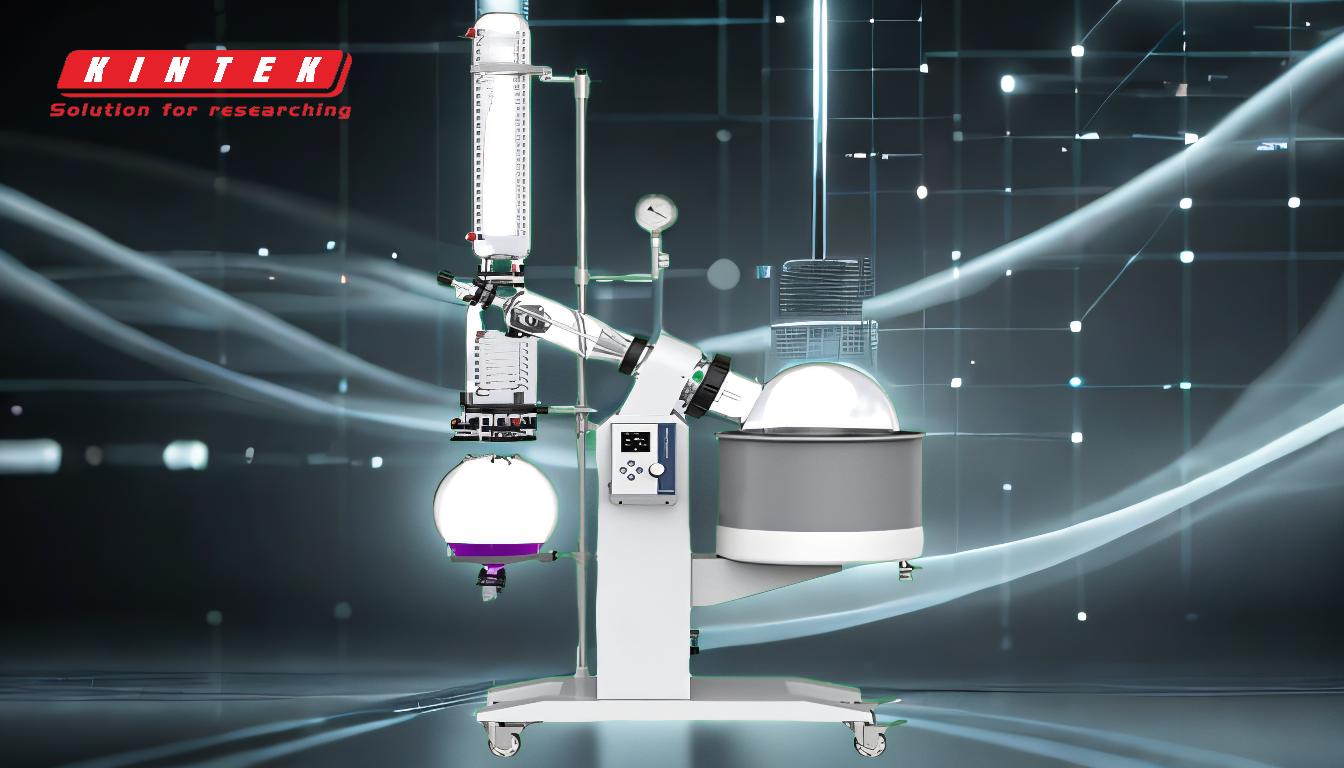Rotary evaporation is a common technique used in laboratories to remove solvents like methanol from samples. The optimal temperature for methanol in a rotary evaporator depends on balancing efficiency and safety. Generally, the water bath temperature should be set around 20°C higher than the desired vapor temperature of methanol, which typically ranges between 25-50°C. Lower temperatures reduce the risk of bumping and thermal decomposition, while higher temperatures can speed up the process but may introduce safety concerns. Proper vacuum settings and condenser temperatures are also critical to ensure efficient and safe methanol removal.
Key Points Explained:

-
Optimal Vapor Temperature for Methanol:
- Methanol has a boiling point of approximately 64.7°C at atmospheric pressure. However, in a rotary evaporator, the boiling point is lowered due to the application of vacuum.
- The recommended vapor temperature for methanol in rotary evaporation typically ranges between 25-50°C, depending on the desired speed and safety considerations.
-
Water Bath Temperature Settings:
- The water bath temperature is usually set about 20°C higher than the desired vapor temperature of the solvent. For methanol, this means a water bath temperature of 45-70°C.
- Lower water bath temperatures (e.g., 30-40°C) are safer and help prevent thermal decomposition of sensitive compounds, but they may slow down the evaporation process.
-
Vacuum Pressure Considerations:
- The vacuum pressure plays a crucial role in determining the boiling point of methanol. For example:
- At 95 mbar, methanol boils at approximately 25°C.
- At 123 mbar, methanol boils at approximately 30°C.
- Adjusting the vacuum pressure allows for precise control over the evaporation process, enabling efficient removal of methanol without excessive heat.
- The vacuum pressure plays a crucial role in determining the boiling point of methanol. For example:
-
Condenser Temperature:
- The condenser temperature should be set about 20°C lower than the vapor temperature to ensure effective condensation of methanol vapors.
- For methanol, a condenser temperature of 0-10°C is typically recommended, which can be achieved using a chiller.
-
Safety and Efficiency Trade-offs:
- Higher temperatures (e.g., 60°C for the water bath) can speed up the distillation process but may increase the risk of bumping, thermal decomposition, or safety hazards.
- Lower temperatures are safer and reduce the likelihood of bumping but may require longer processing times.
-
Practical Recommendations:
- Start with a water bath temperature of 50°C and adjust based on the observed evaporation rate and sample stability.
- Use a vacuum pump to achieve a pressure of 95-123 mbar for efficient methanol removal.
- Set the condenser temperature to 0-10°C to ensure proper condensation of methanol vapors.
-
Additional Tips:
- Always refer to the Standard Operating Procedure (SOP) for your specific rotary evaporator setup.
- Use a distillation nomograph or manometer to fine-tune the vacuum pressure and temperature settings.
- Avoid exceeding the maximum temperature capacity of your water bath (typically up to 95°C) to prevent safety risks and equipment damage.
By following these guidelines, you can achieve efficient and safe methanol removal using a rotary evaporator while minimizing risks and optimizing the process for your specific application.
Summary Table:
| Parameter | Recommended Value |
|---|---|
| Vapor Temperature | 25-50°C |
| Water Bath Temperature | 45-70°C (20°C higher than vapor) |
| Vacuum Pressure | 95-123 mbar |
| Condenser Temperature | 0-10°C |
| Safety Tips | Avoid bumping, thermal decomposition |
Optimize your rotary evaporation process for methanol removal—contact our experts today for tailored advice!













